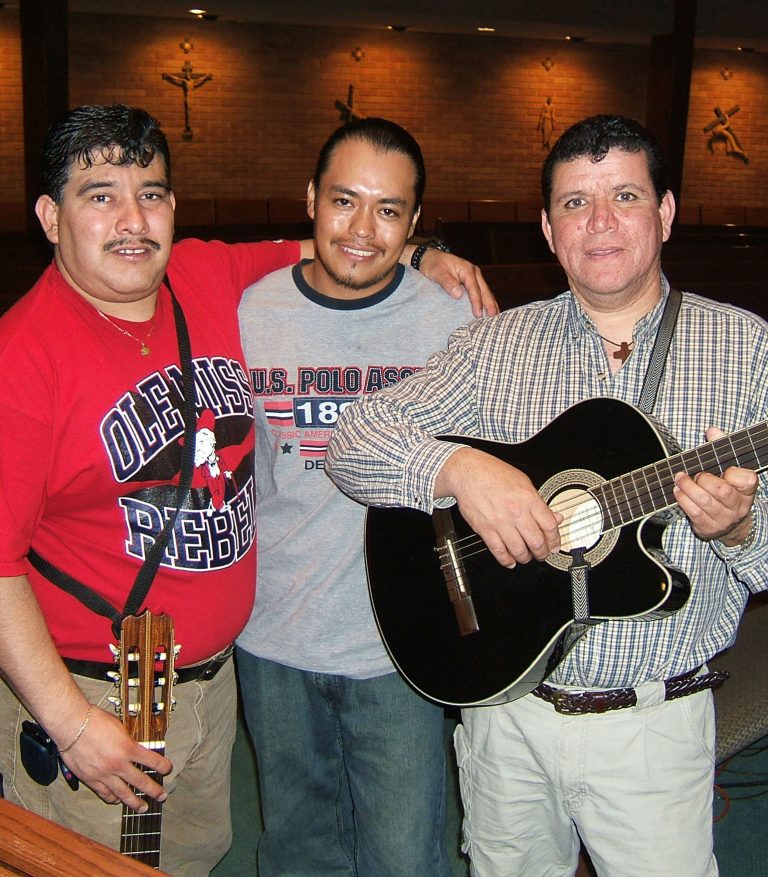Many of the immigrants from Mexico to Mississippi’s Gulf Coast attend Our Lady of Fatima Catholic Church, which welcomes many international parishioners. There’s a Filipino mass every Wednesday evening, and a Spanish-language mass every Monday, at which Mario Garcia, Lalo Herrera, and Leopoldo Villegas sing and play their guitars, along with a rotating crew of a half-dozen other guitarists who belong to the congregation.
Mario and Lalo, who are both in their mid-30s, have known each other since they were children in Saltillo, Coahuila, in northern Mexico. Leopoldo, the youngest member of the ensemble in his mid-20s, is from Mexico City. None of their parents were professional musicians, but all loved music. The members of the group have day jobs, though if music employment picked up enough, that’s what they’d rather do. Mario and Lalo do housekeeping, while Leopoldo works with concrete. They were displaced by Hurricane Katrina and lived in Laurel for a year and a half, where they all worked construction. They are glad to be back on the Gulf Coast, though disappointed that possibilities for Mexican musicians have diminished. Before the storm, they were playing five nights a week in restaurants (plus volunteering every week in church, as they do now), but two years after their return, there’s just one night a week of restaurant work.
All three musicians have sung and played in church since they were children. Lalo started playing guitar especially young, at the age of six, and he takes the lead part when they play together. Mario often leads the singing with his bell-like baritone voice, while the others either sing in unison with him or harmonize. When they play in restaurants, they wear mariachi clothes, the so-called “charro” outfits that stem from northern Mexican ranch owners’ dress clothing of early in the 20th century. They don’t call themselves mariachis since they don’t have violins or trumpets in the group. However, they sing many of the same songs that mariachi groups perform. Like mariachis, they are also ambulantes, strolling musicians who work in part for tips.
About half of the songs they sing while working in restaurants are requests. Their repertoire, like those of all successful Mexican strolling musicians, is enormous. They have built up good relationships with families that enjoy eating and listening to their music and know songs that please each generation. There are Freddy Fender songs (Fender performed for decades as a crossover Mexican and country-western musician), countless boleros like “Solamente Una Vez,” lots of waltzes, and plenty of polka songs, including “The Chicken Dance,” which is known in Mexico just as well as in the U.S.
They also play the most often performed mariachi song, “Guantanamera,” hits like “Rancho Grande,” “Cielito Lindo,” and countless other well-known Spanish-language standards, as well as “Old McDonald” and whatever else it takes to keep the kids happy. There’s a tip box taped to Mario’s guitar, but it’s clear that that isn’t the main reason they’re playing—it’s for the smiles and laughter and singing along that come from their patrons at the restaurant.
– Chris Goertzen

